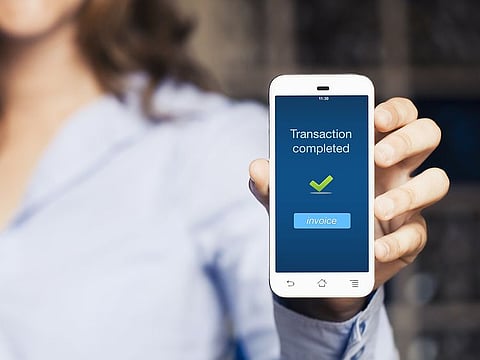Convenience, not cash, is king in today’s transactions, and fintech makes it happen
Digitisation of entire financial transaction chain is inevitable, much like in telecom

We discuss the rapid pace of progress all the time, but the scale we use to measure progress in financial services remains the classic ‘decade’. If the tech industry at large has contributed anything to our concept of growth, it’s the collapsing of time between breakthroughs.
If you adapt fintech in tandem with innovation in other industries, there’s no reason why the rate of advancement can’t reach near-invisible blocks of time. As a proud entrepreneur in the fintech space, let me provide some context on why I believe rapid progress is the future of our space – and why it’s within an arm’s length.
In just two years, cash-on-delivery (COD) has gone from being a preferred payment method to almost becoming obsolete. According to a survey commissioned by Checkout.com, today only 20 per cent of UAE consumers use COD as a payment method for online purchases, compared to 40 per cent in 2020 – one of the quickest conversions in tech history.
More than just a pandemic legacy
The speed of digital payment adoption can, in part, be attributed to the pandemic. With health concerns over physical contact, people of all ages were incentivised to transition away from cash. While the pandemic sparked this trend, the comfort and ease of digital payments kept the fire burning.
Consumers quickly discovered that sending and receiving cash via the devices we use to do just about everything simply made sense. Convenience claimed the throne physical currency happily resided over for millennia. We can now replace the phrase ‘cash is king’ with a more adept truism: ‘convenience is king.’
The report also reveals that 28 per cent of UAE residents use digital wallets to send funds to friends and family, illustrating the popularity of peer-to-peer transactions over traditional bank-to-bank transfers.
When most of our communications are carried out over text, from the traditional SMS to WhatsApp, DMs, Telegram and so forth, it makes sense that our other transactions take similar form.
Using Ziina, the UAE’s first customer-centric digital wallet, users can send or request money as easily as sending a WhatsApp message. For fun, users can tag GIFs and images onto their payments. For the Middle East to fully transition to a cashless economy, the digitisation of cash must closely follow the path the digitisation of communication forged what feels like eons ago.
There’s also the question of security. Digital and mobile wallets bring a unique angle of security to the table: thanks to tokenisation, consumers can make countless purchases from retailers while the merchants never see their actual card information. Tokenisation provides retailers with a solution that allows them to securely process credit card payments from their customers whilst conveniently meeting credit card data security, compliance and reporting requirements.
For example, if you add your normally issued credit card to your Apple Pay wallet, Apple captures your primary account number and sends it to the issuer of the card to create a specific token for that card and device together. When you make a payment using the card through the digital wallet, the merchant only receives the payment token to authorise the payment, never dealing directly with your sensitive data.
The UAE has been laying the groundwork for digital payments on a government level for years. By ensuring most bills can be paid via digital wallets, the country provided the seed for this behavior to grow into a habit. As the 2010s ended with the explosion of crypto on a global level, the UAE recognised that digital wallets were here to stay.
They provided increased legislation for fintech companies to operate and scale legitimately, welcoming the cashless era with open arms. With a multitude of legal frameworks for fintechs embedding themselves into the economy just this year, I foresee a second boom in the coming months as entrepreneurs respond to consumers’ increased demand for digital wallets.
For now, I’m talking in intervals of months. But if we keep going the way we’re going, maybe we can envision a world where fintech developments take days, minutes, or even seconds to reach consumers’ pockets. I’m hopeful and excited for what’s to come.
Sign up for the Daily Briefing
Get the latest news and updates straight to your inbox






